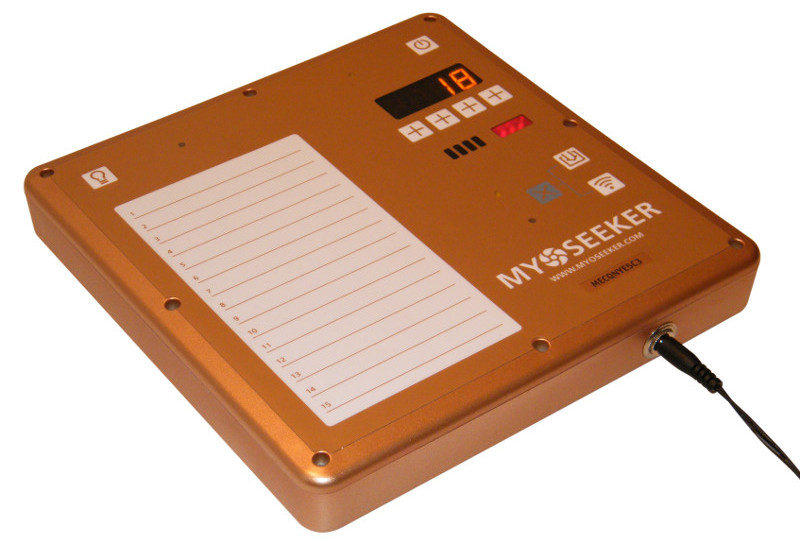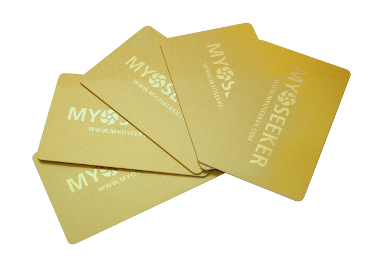MyoSeeker
the unique objects finder/locator, is a new friend for all forgetful people, loosing people, never ending seekers and sclerotic people.
Did you loose something again? MyoSeeker helps you to find it. Just place the MyoCard (credit card size) on it.


Of course, there exist conventional ways how to find lost item. Michael Solomon, the findologist, offers 10 tips:
1. Don't look for it
That is to say, don't look for it yet. Wait until you are in the proper frame of mind, and are prepared to search systematically.
2. It's where it's supposed to be
Amazingly, our possessions are often right where they're supposed to be. Can't locate your raincoat? Check the closet where it's supposed to be kept (someone may have hung it up for you).
3. Domestic Drift
Sadly, things seldom get put back where they belong. So check the place where the missing object was last used. You may be pleasantly surprised.
4. You're looking right at it
Curiously, it is possible to look directly at a lost object and not see it. We've become so agitated that we don't perceive what is right in front of us. So calm down. You may find yourself staring right at those elusive keys.
5. The camouflage effect
Your object may be right where you recall having had it, or where it's usually kept, but it has become covered up. Check beneath anything that might have been inadvertently placed on top of the object and be hiding it from view.
6. Think back
Can't find your glasses? Somewhere in your unconscious mind, you know their location because you left them there!
7. The Eureka zone
Many objects are in the immediate vicinity of where you thought they were--they've merely undergone a displacement. (A pair of scissors, for example, has been shoved to the rear of its drawer). Objects tend to travel no more than eighteen inches from their original location. So measure a radius of eighteen inches--that's your Eureka Zone. Now search it meticulously.
8. Look once, look well
Don't keep going back to check a particular site, no matter how promising. If it wasn't there the first time, it won't be there the second (assuming, of course, that your initial check was meticulous).
9. Tail thyself
Simply follow your own trail. Physically retrace your steps from the last place you remember having the object.
10. It wasn't you
Occasionally, an object hasn't been misplaced--it's been misappropriated. Approach the likely culprit and ask (as tactfully as possible) if he has perhaps taken your magazine or borrowed your umbrella.
Source: http://www.professorsolomon.com/graphics/howtofindlostobjects.pdf
Some people loose daily up to nine things (source NBC NEWS http://www.today.com/video/today/55018034#55018034).

